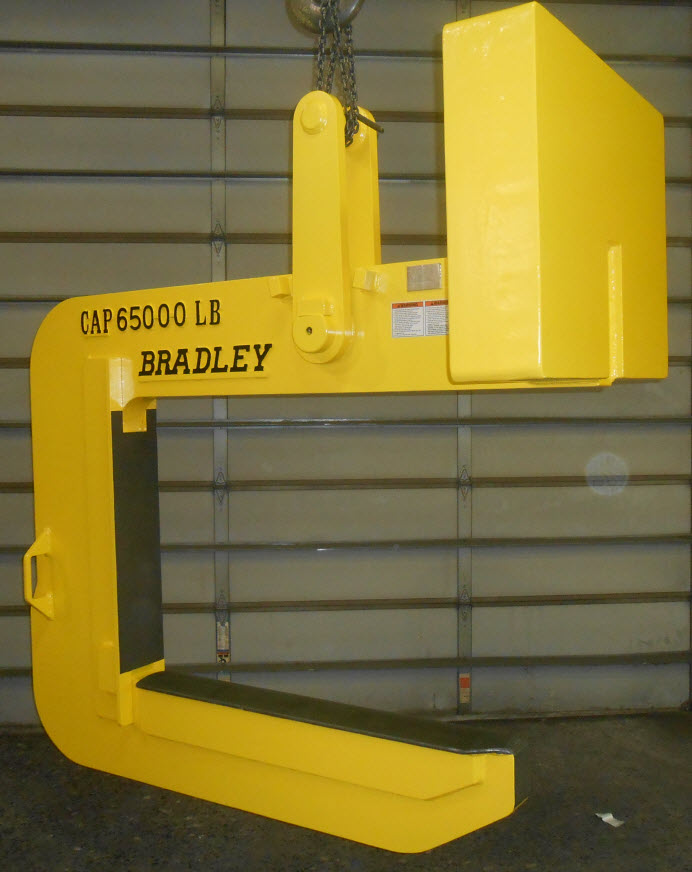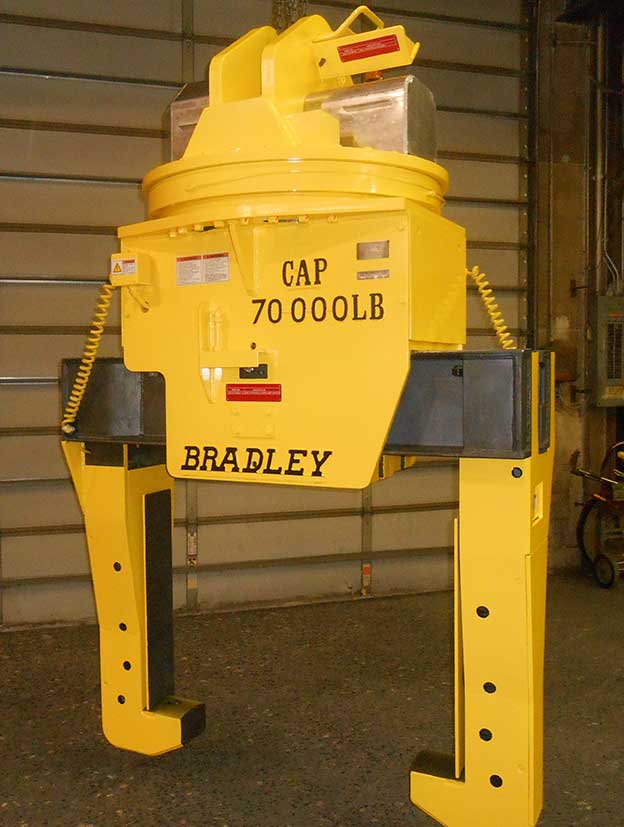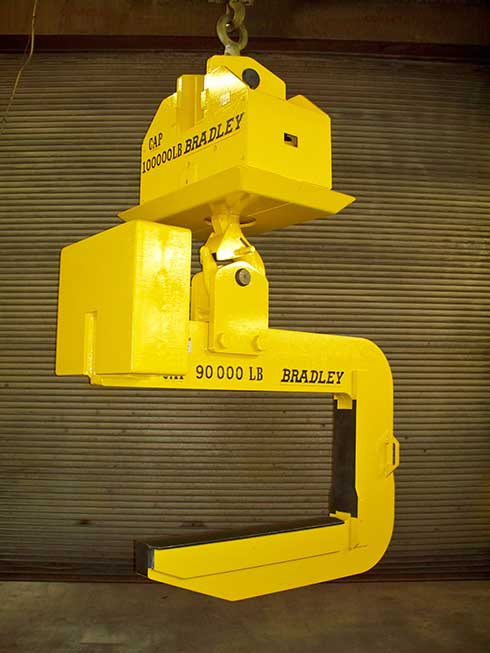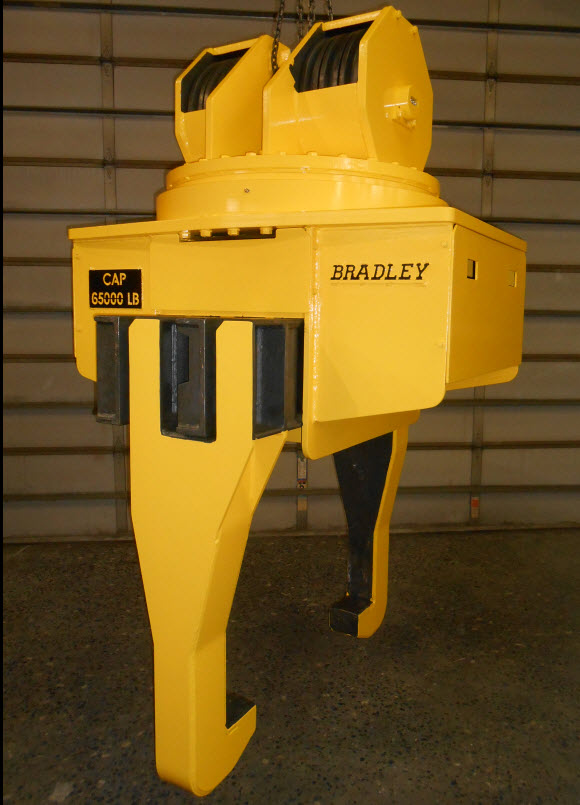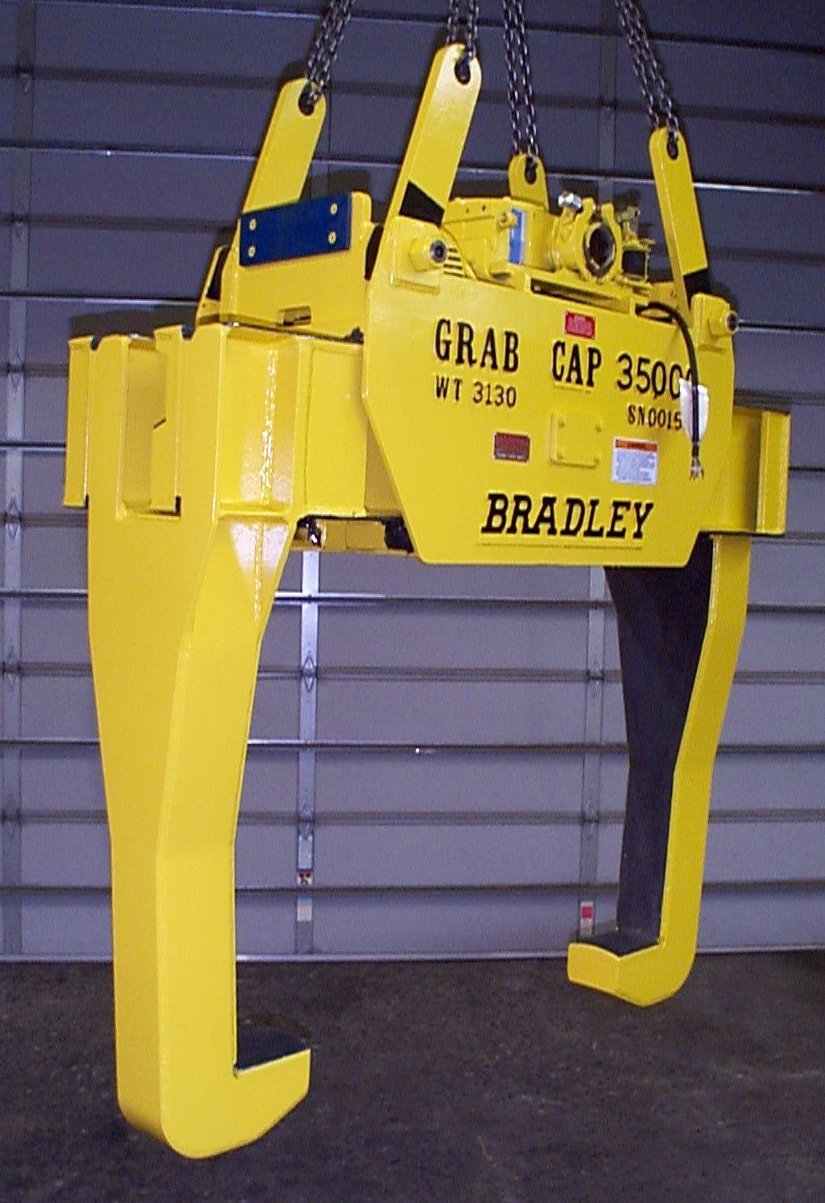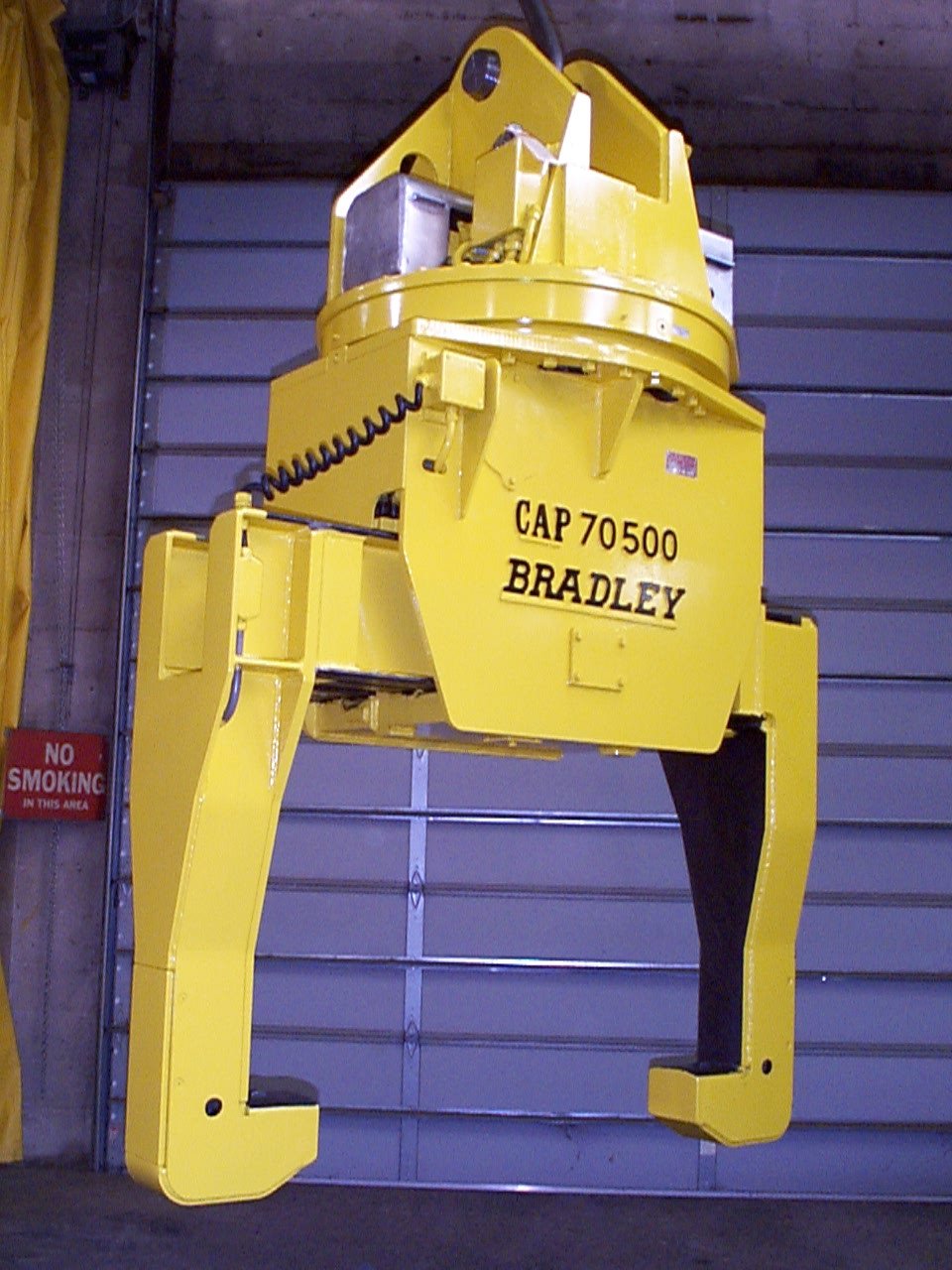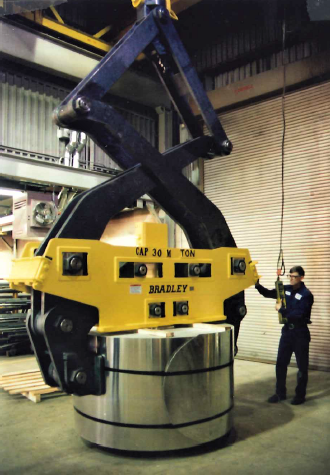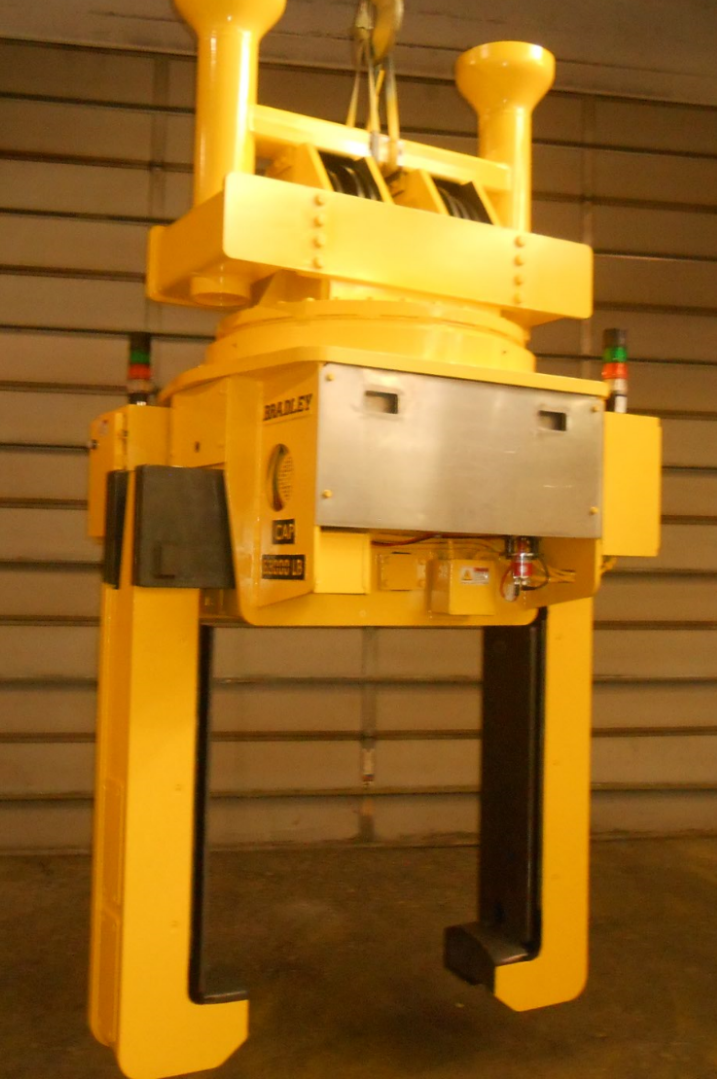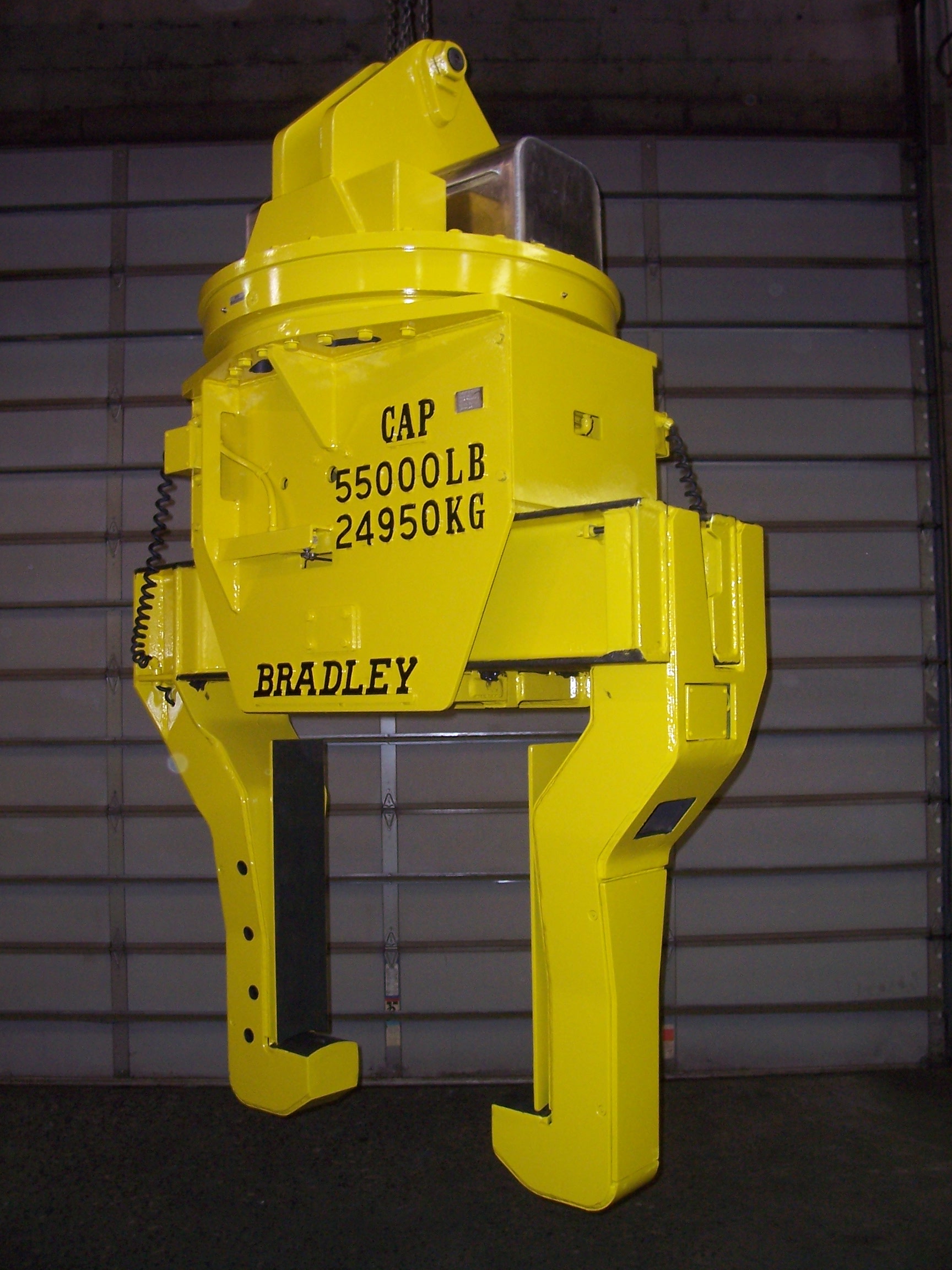Coil Lifters
No matter what your coil handling application involves, Bradley Lifting Application Engineers will help you find the solution that best meets your material handling needs. We provide solutions to suit any process from the Hot Mill, Cold Mill, Galvanizing/Plating Lines, and Annealing to Processing, Storage and Shipping. Click on the links below to learn more about the different options for Coil Handling:
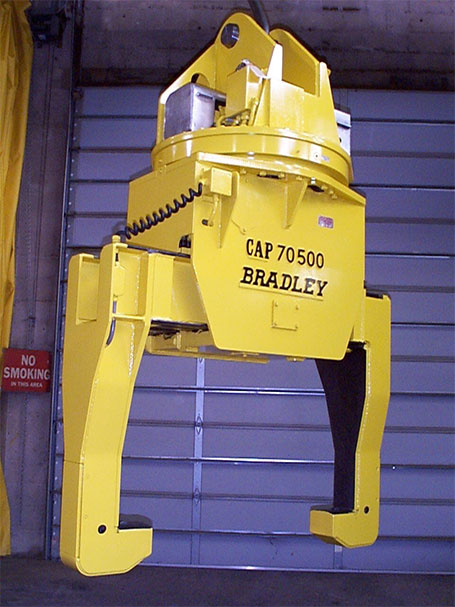
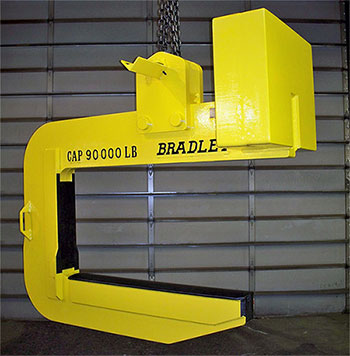
Coil Lifting C-Hooks
Heavy-Duty C-Hooks from Bradley Lifting are a simple and effective solution for your coil handling needs.
Bradley C-Hooks feature a frame cut from single, alloy steel plate and are designed for a 24/7 production environment.
C-Hooks are a perfect fit when you need to stack coils (or slit coils) closely together, end-to-end, or when access to the coil I.D. is restricted to one side. Additional features include urethane bumpers, low-headroom designs, and motorized rotation.
Telescoping Coil Grabs
Motorized Telescoping Coil Lifters are the preferred solution when handling coils where the axis is horizontal.
The telescoping legs offer the ability to handle a wide range of coil diameters and widths while maintaining a low headroom profile.
Motorized rotation about the vertical axis, hold-down arms for un-banded coils, and digital weighing systems are just a few of the many additional features available for these devices. Coil protection features, and built-in safety devices are also available and can be integrated with automated crane applications.
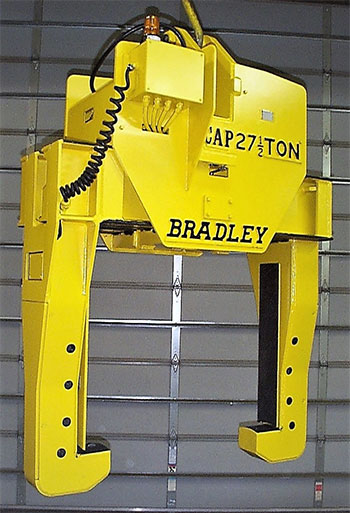

Parallelogram Coil Lifters
Parallel Linkage Coil Lifters are commonly used for coil handling applications where the coil axis is horizontal. The linkage mechanism is good for narrow aisles in coil storage areas but does require additional headroom to operate when compared to a telescoping drive lifter. Powered rotation, retractable feet, and a multitude of additional safety options are also available. Contact a Bradley Engineer to discuss whether a Parallel Linkage Coil Lifter is a fit for your application needs.
Vertical Axis Coil Tongs
For coils positioned with the axis vertical (“eye to the sky”) and the underside of the coil is not accessible, a vertical axis coil tong is an excellent solution. Heavy-duty units built for continuous operation, these tongs are custom-configured to handle your full range of coil sizes. Single-rim grip or double-rim grip versions are available, as well as single or double coil handling designs. Automatically activated tongs offer virtually “hands-free” operation.
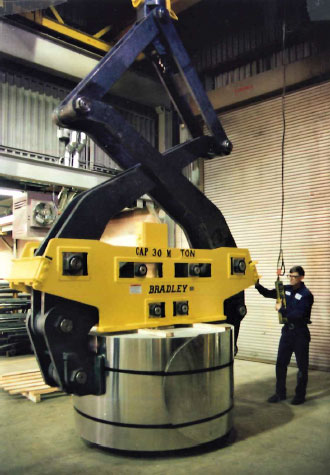
Asked & Answered
Q: Which is better for my application: A C-Hook or Telescoping Coil Grab?
A: Each device has a unique set of advantages. C-Hooks require no external power to operate, and work perfectly where high count handling of coils is required and where clearance is available for insert/removal on coils. Telescoping Coil Grabs offer an advantage in safety by providing engagement on both sides of the coil and take less room to operate. Perfect for automated systems, coil storage areas, or any place that space is at a premium.
Q: What is a “Single-Rim” grip vs. “Double-Rim” grip for Vertical Axis Coil Tongs?
A: “Single-Rim” grip means that the coil is gripped on one side between the ID and OD of the coil. This is suitable for heavy gauge coils where the ID and OD are consistent within a limited range. “Double-Rim” grip is more secure since the tong grips on both sides of the coil between the ID and OD, and is more suitable for delicate, thinner gauge strip. Double-Rim tongs are more tolerant of variation of the coil ID and OD.
Q: What is the difference between a Parallel Linkage Lifter and a Telescoping Lifter?
A: Parallel linkage lifters offer the advantage of a consistent width outside of the coil, and are best in tight clearance situations, or where there is an extreme range of coil widths to be handled. This type of grab requires more headroom to operate. Telescoping lifters require less headroom to operate, and in most cases, offer the same width advantages as a parallel linkage lifter. However, when an extreme range of coil widths are present, the arms can potentially “cross-over” limiting the minimum width of the grab. Contact a Bradley Engineer to learn more!
GET ANSWERS

